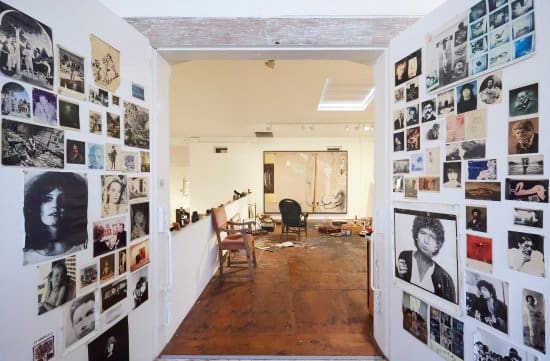Since 1995, three years after the death of celebrated Australian artist Brett Whiteley in 1992, the Whiteley Studio has been managed by the Art Gallery of NSW and the Whiteley Estate, serving as a posthumous biography for one of Australia’s most nationally recognised artists. In Whiteley’s early career, his synthesis of European as well as Australian art (particularly Russell Drysdale) hinted at a talent that was yet to flourish. Throughout the sixties and seventies, Whiteley’s travels through Europe and America infused his works with the anxieties of the zeitgeist – the Vietnam War being one of the most noticeable. In 1976, he won the Archibald Prize (with his work Self-Portrait in the Studio) and, in 1978, he won all three national art prizes (Wynne, Sulman and Archibald) and cemented his national fame.
His studio, a comforting, two-storey warehouse in Surry Hills, typically features paintings that depict the erratic and brazen strokes that characterise the confronting dramatism of his works. Despite this, the new exhibition ‘Printmaker’ depicts a perspective rarely seen in Whiteley’s career, with the spontaneous inks inspired by Ukiyo-E manga and Van Gogh drawings dichotomously presented against meditative etchings and prints, a standout certainly being The Divided Unity. Despite the soothing tranquillity of Whiteley’s colours in The Divided Unity, the tumultuous tempest of its scene seems a common undercurrent throughout his work. Although his works often have a distinct admiration for natural beauty, there is undoubtedly a fixation on the sinister macabre present throughout this career.
Whiteley seems to possess a constant fascination for the macabre, with references from Yukio Mishima (who committed seppuku in 1970) to serial killer John Christie. The sporadic fascination Whiteley had for Christie is displayed in two works in this exhibition representing the dichotomous relationship he seemed to possess in representing the harshest repugnance of society in order to find and epitomise that which he found so beautiful. The scattered menagerie of Whiteley’s own possessions throughout the studio – his sunglasses, photographs, books – all create an insightful image into the mind of Whiteley for a visitor who may have no prior knowledge.
The biography created in the space of this studio is comforting in a melancholic way, with his music of 60s rock stars playing in the background and the forever exhibited mammoth painting of Alchemy. The transitioning throughout this piece seems to capture everything that is evident in Whiteley’s eclectic motifs from the nature of his sexual obsessions shifting through explosions of political and philosophical anxieties and finally reaching the golden light of tranquillity.
The Brett Whiteley Studio is open Thursday – Friday, 10am – 4pm





